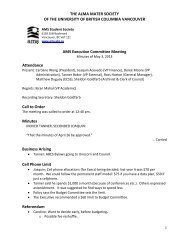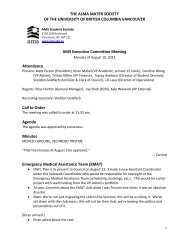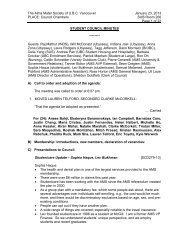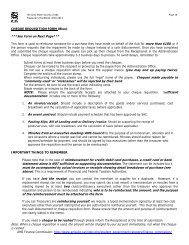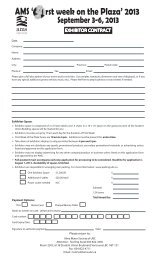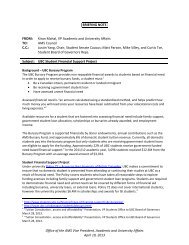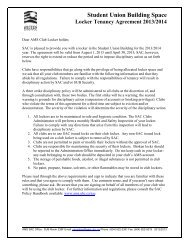AMS External Policy Manual - Alma Mater Society of UBC
AMS External Policy Manual - Alma Mater Society of UBC
AMS External Policy Manual - Alma Mater Society of UBC
Create successful ePaper yourself
Turn your PDF publications into a flip-book with our unique Google optimized e-Paper software.
<strong>Policy</strong> Number:2013-10 Passed:Title:Long-term public transit solutions for the Broadway-<strong>UBC</strong> CorridorJuly 3, 2013Expires:July 3, 2016Summary:Supports the City <strong>of</strong> Vancouver’s recommendation <strong>of</strong> a below-grade rail line from Commercial Drive to <strong>UBC</strong>and other solutions under certain conditions, while also affirming that any solution must have minimalimpact on businesses and communities along the corridor.Whereas the <strong>AMS</strong> supports a sustainable and efficient transit network in Metro Vancouver, especiallyalong the Broadway Corridor, spanning from Commercial Drive to <strong>UBC</strong>;Whereas Greater Vancouver’s transit system is over capacity and unable to meet the demands <strong>of</strong> anevolving metropolitan area, especially along the Broadway corridor, where, according to a recent study byKPMG reports that more than 100,000 people board a bus each day;Whereas the City <strong>of</strong> Vancouver has completed their Transportation 2040 study for the Broadway corridorand Vancouver City Council has deemed a below-grade rapid rail extension <strong>of</strong> the Millennium Line to bethe most appropriate solution;Whereas a recent 2013 KPMG report cited the importance <strong>of</strong> the Broadway Corridor to the province’soverall economic development, being “B.C’s second largest business and innovation area.” (KPMG, 2013);Whereas <strong>UBC</strong> is the province’s second largest employer with 13,900 jobs, $10 billion <strong>of</strong> annual economicimpact, and over 152 different spin-<strong>of</strong>f companies;Whereas <strong>UBC</strong> students are currently facing severe difficulties commuting to and from campus, affectingtheir academic and social experiences while at university; andWhereas there is a need for the introduction <strong>of</strong> rapid transit infrastructure throughout the region toaccommodate a growing region and economy;Be it resolved that the <strong>AMS</strong> formally support the recommendation within the City <strong>of</strong> Vancouver’sTransportation 2040 plan and continue to advocate for rail-based rapid transit as the most suitable mode<strong>of</strong> transit along the Broadway corridor, though the <strong>AMS</strong> will be open to alternative proposals for thecorridor so long as they increase carrying capacity by 50%, allow users to remain on a single mode <strong>of</strong>transit between Commercial Drive and <strong>UBC</strong>, and that the solution operates the entire length <strong>of</strong> thecorridor; andBe it further resolved that during construction, there should be the lowest degree <strong>of</strong> negative impact onbusinesses and neighbourhoods along the corridor and said solution must have the lowest possible degree<strong>of</strong> negative impact upon businesses and neighbourhoods along the corridor and the maximum positiveimpact once it is in operation.*NOTE: The KPMG study referred to in this policy was published on February 28, 2013 under the title The <strong>UBC</strong>-Broadway Corridor – Unlocking the Economic Potential and was commissioned by the City <strong>of</strong> Vancouver and <strong>UBC</strong>.<strong>AMS</strong> <strong>Policy</strong> <strong>Manual</strong> Page | 38



